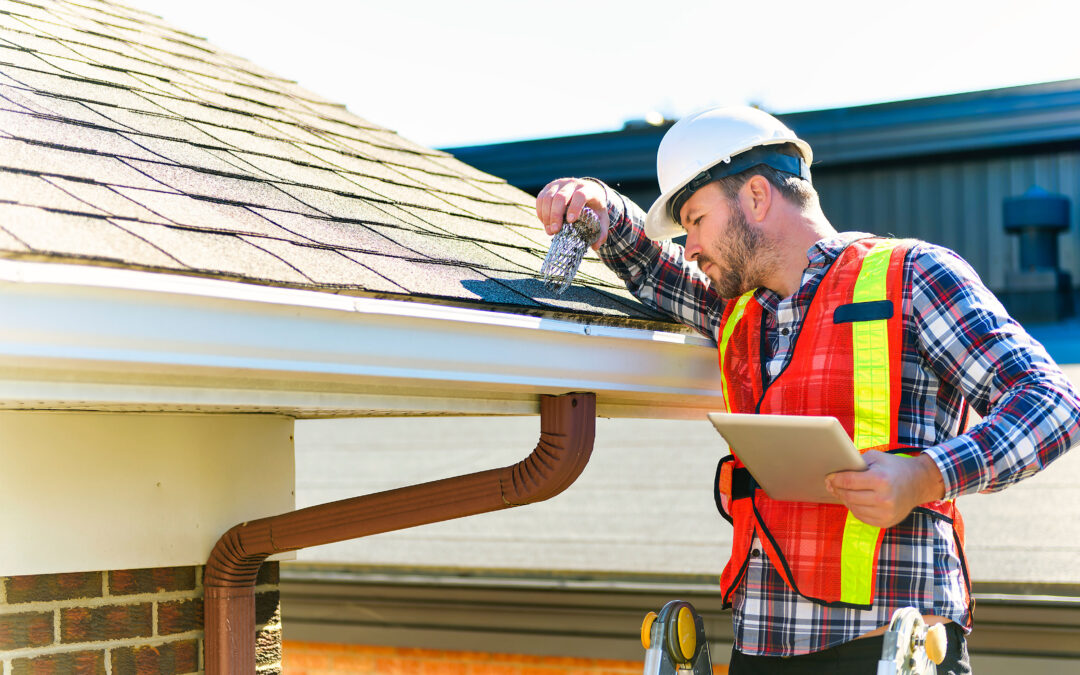Welcome to our comprehensive article on the benefits of energy-efficient roofing in the great state of Texas.
In this article, we will explore the importance of energy efficiency in reducing energy bills and promoting environmental sustainability. We will delve into the world of energy-efficient roofing, its key features, and how it differs from traditional roofing systems.
By the end of this article, you will have a clear understanding of the advantages of energy-efficient roofing and why it is a smart choice for homeowners in Texas.
Understanding Energy-Efficient Roofing
Energy-efficient roofing is a roofing system designed to minimize the transfer of heat from the sun into the building, thus reducing the need for excessive cooling. Unlike traditional roofing systems, which absorb and transfer heat, energy-efficient roofs are engineered to reflect sunlight and emit absorbed heat. This fundamental difference allows energy-efficient roofs to keep the interior of a building cooler, resulting in reduced energy consumption and lower energy bills.
Key features of energy-efficient roofing include:
Reflective Materials: Energy-efficient roofs are typically made of materials with high solar reflectance, such as cool roof coatings or light-colored shingles. These materials reflect a significant portion of the sun’s rays, preventing them from being absorbed into the building.
Insulation: Energy-efficient roofing systems often incorporate insulation materials that provide an additional barrier against heat transfer. This insulation helps maintain a consistent indoor temperature and reduces the need for excessive cooling.
Ventilation: Proper ventilation is crucial for energy-efficient roofing systems. It allows hot air to escape from the attic, preventing heat buildup and reducing the strain on cooling systems.
Energy-Efficient Roofing Benefits in Texas
Texas is known for its scorching hot summers, and energy-efficient roofing can significantly help reduce energy bills during these peak months. By reflecting a large portion of the sun’s rays, energy-efficient roofs keep the interior of a building cooler, reducing the need for air conditioning and ultimately lowering energy consumption.
Energy-efficient roofing also plays a vital role in regulating indoor temperature. The insulation and reflective properties of these roofs help maintain a comfortable and consistent temperature throughout the year, regardless of the external weather conditions. This not only enhances the comfort of the occupants but also reduces the strain on cooling systems, leading to potential savings on cooling costs.
Environmental Benefits
Energy-efficient roofing goes beyond cost savings; it also contributes to a greener environment in Texas. By reducing energy consumption, these roofs help lower greenhouse gas emissions, which are a significant contributor to climate change. The use of energy-efficient roofing materials can have a substantial impact on reducing carbon footprints and promoting environmental sustainability.
Additionally, energy-efficient roofing plays a crucial role in reducing the urban heat island effect. In urban areas, the concentration of buildings and paved surfaces absorbs and retains heat, creating localized hotspots. Energy-efficient roofs, with their reflective properties, help mitigate this effect by reducing the amount of heat absorbed by buildings and surrounding surfaces. This, in turn, helps lower ambient temperatures and improve the overall comfort of urban environments.
Types of Energy-Efficient Roofing Systems
There are several types of energy-efficient roofing systems available in Texas, each with its unique benefits and features. Let’s explore some of the most popular options:
Cool Roofs: Cool roofs are designed to reflect more sunlight and absorb less heat than traditional roofs. They are typically made of highly reflective materials, such as white or light-colored coatings, tiles, or shingles. Cool roofs can significantly reduce the heat absorbed by buildings, leading to lower energy consumption and increased comfort.
Green Roofs: Green roofs, also known as living roofs, are covered with vegetation and a waterproofing membrane. These roofs provide natural insulation, reduce stormwater runoff, and improve air quality. Green roofs are an excellent option for homeowners looking to enhance the aesthetic appeal of their property while enjoying the benefits of energy efficiency.
Solar Roofs: Solar roofs combine energy-efficient roofing with renewable energy generation. These roofs are equipped with solar panels that capture sunlight and convert it into electricity. By harnessing the power of the sun, homeowners can reduce their reliance on the grid and lower their energy bills while contributing to a cleaner environment.
Considerations for Choosing Energy-Efficient Roofing
When selecting energy-efficient roofing, homeowners should consider several factors to ensure optimal performance and long-term benefits. Here are some key considerations:
Proper Insulation: Energy-efficient roofing works best when combined with proper insulation. Adequate insulation helps prevent heat transfer from the roof to the interior of the building, maximizing energy efficiency and comfort.
Ventilation: Proper ventilation is essential for energy-efficient roofing systems. It allows hot air to escape from the attic, preventing heat buildup and reducing the strain on cooling systems. Homeowners should ensure that their roofing system incorporates adequate ventilation to optimize energy efficiency.
Climate Adaptability: Different roofing materials and systems perform differently in various climates. In Texas, where the summers can be scorching hot, it is crucial to choose energy-efficient roofing materials that are specifically designed to withstand high temperatures and provide effective heat reflection. Consulting with a roofing professional can help homeowners select the most suitable materials for their specific climate.
Long-Term Durability: Energy-efficient roofing should be durable enough to withstand the harsh Texas weather conditions, including high winds, intense sunlight, and occasional hailstorms. Investing in high-quality materials and professional installation ensures that the roof will last for many years, providing long-term energy savings and peace of mind.
Financial Incentives and Return on Investment
In Texas, there are various financial incentives and rebates available for homeowners who choose to install energy-efficient roofing. These incentives aim to promote sustainable practices and help offset the initial costs of upgrading to energy-efficient systems. Homeowners should research local programs and initiatives that offer rebates or tax credits for energy-efficient improvements.
When considering the financial aspect, it is essential to evaluate the return on investment (ROI) of energy-efficient roofing. While the upfront costs may be higher compared to traditional roofing systems, the long-term savings on energy bills can offset the initial investment. Homeowners should calculate the potential energy savings over the lifespan of the roof to determine the ROI and make an informed decision.
Maintenance and Longevity of Energy-Efficient Roofing
Proper maintenance is crucial for maximizing the longevity and performance of energy-efficient roofing systems. Regular inspections and maintenance can help identify and address any issues before they escalate into costly repairs. Here are some maintenance tips for energy-efficient roofing:
Regular Cleaning: Keep the roof clean by removing debris, leaves, and other materials that can accumulate and hinder the reflective properties of the roof.
Inspect for Damage: Regularly inspect the roof for any signs of damage, such as cracks, leaks, or loose shingles. Addressing these issues promptly can prevent further damage and ensure the roof’s effectiveness.
Professional Inspections: Schedule professional inspections at least once a year to assess the overall condition of the roof and identify any underlying issues that may require attention.
By following these maintenance practices, homeowners can extend the lifespan of their energy-efficient roofing and maximize its energy-saving potential.
Conclusion
In conclusion, energy-efficient roofing offers numerous benefits for homeowners in Texas. By reducing energy consumption, lowering energy bills, and promoting environmental sustainability, energy-efficient roofs are a smart investment for both financial and ecological reasons. With various types of energy-efficient roofing systems available, homeowners have the flexibility to choose the option that best suits their needs and preferences.
When considering energy-efficient roofing, it is essential to factor in proper insulation, ventilation, climate adaptability, and long-term durability. Additionally, exploring financial incentives and calculating the return on investment can help homeowners make informed decisions.
By choosing energy-efficient roofing and maintaining it properly, homeowners can enjoy the comfort, cost savings, and environmental advantages that come with this sustainable solution. Embrace the benefits of energy-efficient roofing and contribute to a greener and more energy-efficient Texas.
Frequently Asked Questions (FAQ)
What is the lifespan of energy-efficient roofing?
Energy-efficient roofing systems can have a lifespan similar to that of traditional roofing systems, typically ranging from 20 to 50 years. However, proper maintenance and regular inspections are crucial for maximizing the longevity of the roof.
Are there any tax credits available for installing energy-efficient roofing in Texas?
Yes, there are tax credits and financial incentives available for homeowners who choose to install energy-efficient roofing in Texas. Homeowners should research local programs and initiatives to determine eligibility and take advantage of these benefits.
Can energy-efficient roofing be installed on existing homes?
Yes, energy-efficient roofing can be installed on existing homes. However, it is important to consult with a roofing professional to assess the compatibility of the existing structure and determine the best approach for installation.
Do energy-efficient roofs require special maintenance?
Energy-efficient roofs require regular maintenance, similar to traditional roofs. Regular cleaning, inspections, and addressing any issues promptly are essential for maximizing the performance and longevity of energy-efficient roofing systems.
Can energy-efficient roofing help reduce noise pollution?
Energy-efficient roofing, particularly those with additional insulation, can help reduce noise pollution by providing an additional sound barrier. This can be beneficial for homeowners living in noisy areas or near busy roads.
Remember, choosing energy-efficient roofing is not only a smart financial decision but also a step towards a more sustainable future. Embrace the benefits of energy efficiency and contribute to a greener Texas.





